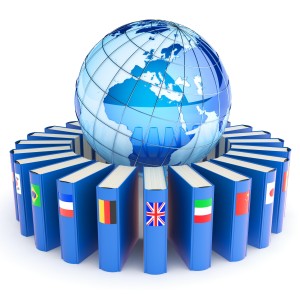How Long Does It Take to Become an Elite… in Anything
How Long Does It Take to Become an Elite… in Anything?
Popular knowledge says 10,000 hours of practicing the correct way. That was popularized by Malcolm Gladwell in his bestseller Outliers: The Story of Success in 2008.
Popular knowledge talks about years too – 10 years to become an expert. The first to say that was Herbert A. Simon (Nobel Prize, 1976) and his colleagues who estimated that expertise took learning approximately 50,000 chunks of experience (Rose, Greg, 2013).
Decades of scientific investigation indicate that the 10,000 hours of practice is the average for world-class musicians but not every skilled profession. Vladimir Issurin, 2017, in Sports Medicine reported the following: Exceptionally talented athletes in endurance, power and combat sports achieved world-class status after 7 years of specialized preparation, doing 3,000-7,000 hours of purposeful training. On the other hand, Olympic artistic gymnastics champions achieved world-class status following an average of 9.7 years of specialized preparation, doing an average of 8919 hours of specialized training.
A 2019 study published in Royal Society: Open Science of 13 violinists found that the less accomplished violinists had logged an estimated 6,000 hours by age 20 while the good and best had both logged around 11,000 hours, reported authors Brook Macnamara and Megha Maitra. So the number of hours did not account for all the differences.
There is evidence that a combination of genetic factors, environmental factors, their interactions, and motivation, practice, and opportunity goes into mastering a skill (Macnamara, Maitra, 2019; Issurin, 2017).
Here’s more. In Tim Gibbons and Tammie Forster’s landmark study for the United State Olympic Center’s Athletic Development Program, “The Path to Excellence,” they researched the development of U.S. Olympians who competed between 1984 and 1998.
A few of their conclusions:
U.S Olympians began their sport-specific participation at the average age of 12.0 for males and 11.5 for females.
Most Olympians reported a 12- to 13- year period of talent development from their sport introduction to being placed on an Olympic team.
Olympic medalists were younger –1.3 to 3.6 years — during the first 5 stages of development than non-medalists. This suggests that medalists were receiving motor skill development and training at an earlier age.
US Olympians played an average of 3 sports between ages of 10 and 14 (Dr. Brad DeWeese, USOC, 2014).
According to Greg Rose 2013, the 10-year-rule has been shown to also apply to the development of expertise in other domains, including music (Ericsson, Krampe, & Tesch-Romer, 1993; Hayes, 1982; Sosniak, 1985), mathematics (Gustin, 1985), swimming (Kalinowski, 1984), distance running (Wallingford, 1975), tennis (Monsaas, 1985), soccer and field hockey (Helsen, Starkes & Hodges, 1998). Data suggests golf is a 20-year developmental sport, not 10 years. Research by PGA of GB and Greg Rose came up with an average of 21.5 years to become a winner on the PGA or European Tour.
The 10,000 hour rule is still highly debatable in the research (some show 4,000 hours, some 6,000 hours) but all studies indicate a significant investment in time is required.
Much of the debate about how many hours is required to master an area is due to lack of agreement between experts on what they consider practice. Is any type of repetition practice? What is correct practicing?. I’ll get to that later.
Soooooo, this is an article directed to nonnative-born speakers of English. What does all this have to do with successful acquisition of clear American English Speech and development of mastery or expertise? Typically nonnative-born persons get an average of 5 to 7 years of English instruction in their home country. All of that counts toward development of expertise and mastery. Also recall that the U.S. requires formal schooling from age 6 to 16—all of which is conducted in English. Those 10 years are viewed to be minimum for acquiring English communication skills for work and social life through the person’s lifetime.
Furthermore, Clear Talk Mastery measured average English speech intelligibility for the initial diagnostic assessment for almost a thousand people since 2000 to be 34%. Compare that to the native-born U.S. A. person’s average score of 90% when speaking casually and 95% when instructed to speak clearly. Written and oral interview for each adult nonnative-born person doing the initial diagnostic assessment clearly showed that the type of English instruction and the kind of practice is vastly different among individuals and between countries and within countries (63 different countries).
Recall that debate for how many hours it takes to master a domain (such as sports, music, mathematics) is due to the lack of agreement between experts on what they define as practice. The range from 2% to 83% for the initial diagnostic assessment (average 34%) for English speech intelligibility is likely an indication of the kind and quality of previous instruction and practice for English language, especially speaking clear English. And it is likely due also to other factors, a combination of genetic factors, motivation, and opportunity for speaking English.
There is general agreement about the kind of practice needed by kids (and others) if they want to get better. I’ll get to what a comprehensive review of this topic uncovered.








